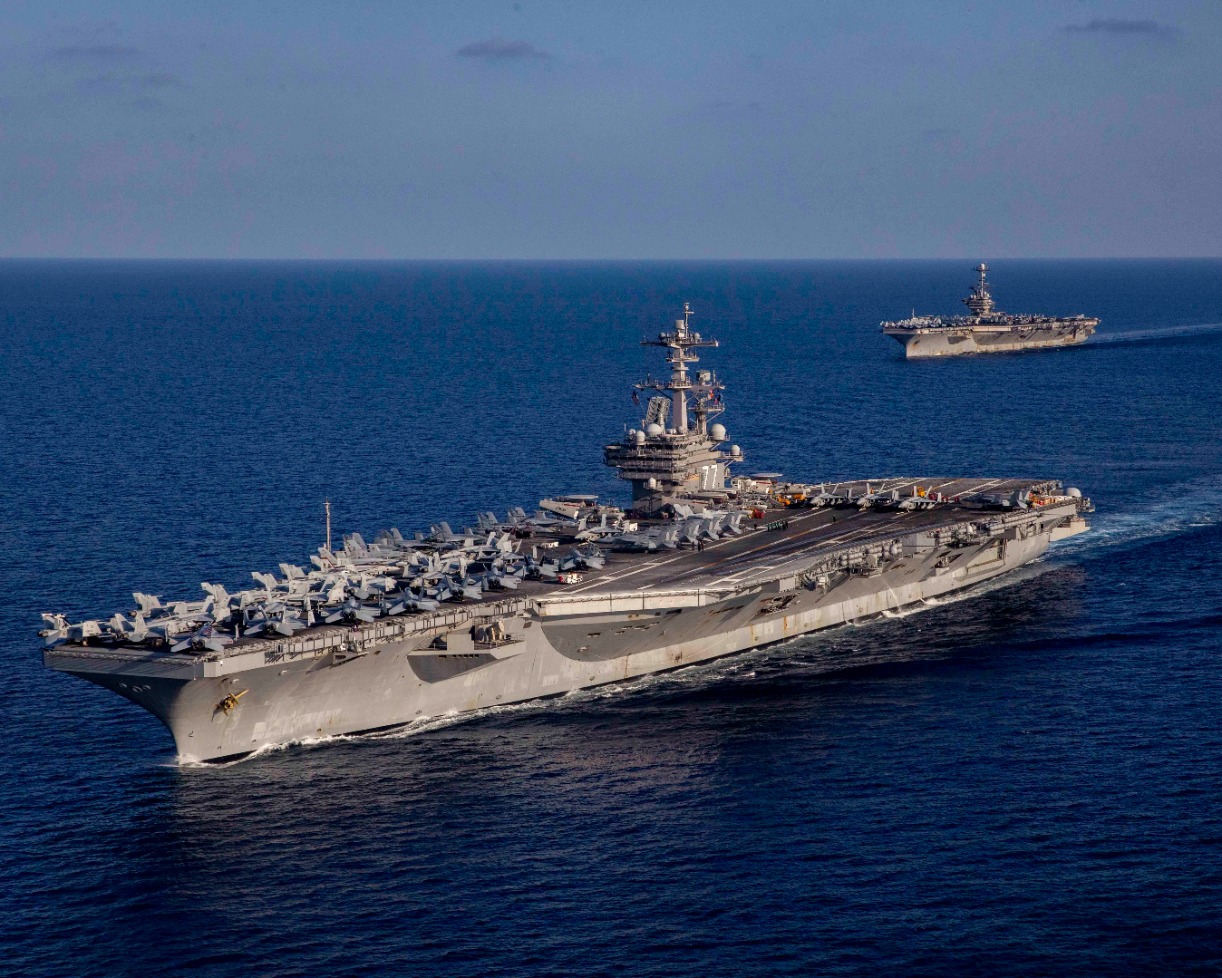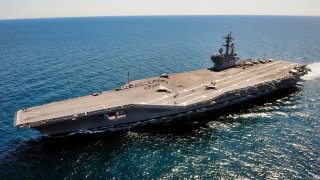USS George H.W. Bush: The Navy's Final Nimitz-Class Carrier Packs a Punch
The USS George H.W. Bush (CVN-77) is the tenth and final Nimitz-class nuclear-powered aircraft carrier, honoring the 41st U.S. president and former naval aviator.
Summary and Top 4 Ideas You Need to Know: The USS George H.W. Bush (CVN-77) is the tenth and final Nimitz-class nuclear-powered aircraft carrier, honoring the 41st U.S. president and former naval aviator.
-Equipped with advanced aircraft and defensive systems, this carrier supports various missions, including air support and strikes.
-Despite being a large target, its impressive speed and modern propulsion system make it formidable.
-Commissioned in 2009, it has already participated in significant operations, such as airstrikes against ISIS and NATO exercises, demonstrating its strategic value in modern warfare.
Inside the USS George H.W. Bush: A Modern Naval Powerhouse
USS George H.W. Bush (CVN-77) is a Nimitz-class nuclear-powered aircraft carrier, the tenth and final vessel of its class. The naming of the ship was a poignant one, since former President George H.W. Bush was a naval aviator during the Second World War. Bush saw combat in the Pacific Theater, even getting shot down in combat and nearly captured.
Thus, the U.S. Navy was paying homage to the service and incredible life of the forty-first president.
Capabilities and Weapons
CVN-77 comes equipped with a wide array of weapons and defensive systems designed to carry out its mission as a multirole aircraft carrier. Its primary offensive capabilities come from the aircraft it carries. These include a mix of fixed-wing and rotary-wing aircraft. According to her designs, the carrier can accommodate approximately 60 aircraft, including F/A-18E/F Super Hornets, EA-18G Growlers, E-2D Advanced Hawkeyes, C-2A Greyhounds, and MH-60S/R Seahawks.
In terms of defensive capabilities, USS George H.W. Bush is equipped with the RIM-162 Evolved Sea Sparrow Missile for short-range defense against cruise missiles and aircraft, and the RIM-116 Rolling Airframe Missile for close-in defense against missiles and aircraft. This boat carries a potent Phalanx Close-In Weapon System for point defense against missiles and aircraft, along with the SLQ-32 electronic warfare system for detection, identification, and jamming of enemy radar and communications systems.
She carries a crew complement of approximately 5,000, including officers, enlisted sailors, and air wing personnel.
George H.W. Bush can reach a maximum speed of 30 knots, or 35 miles per hour, when fully loaded. While those of us who are skeptical about the efficacy of the Navy’s aircraft carriers in the age of advanced anti-access/area-denial (A2/AD) defensive systems point out that these boats are giant targets, proponents of flattops point to the cruising speed of these boats. And, for a system this big, it is true that reaching up to 35 miles per hour, while it might sound slow, is actually an incredible engineering feat.
CVN-77 displaces approximately 102,000 tons when fully loaded. In other words, the Navy shouldn’t need a bigger boat. However, the Pentagon is investing in the even bigger Gerald R. Ford class of carriers.
As an interesting aside, USS George H.W. Bush was the first U.S. aircraft carrier to feature a new, more efficient propulsion system that uses a single shaft rather than two. By doing this, engineers helped to reduce the warship’s overall weight and improve its maneuverability. These changes went on to greatly inform the design and development of the aforementioned Ford-class carrier.
USS George H.W. Bush was commissioned in January 2009. The ship was built by Northrop Grumman in Newport News, Virginia. Construction on the great ship began in 2001, at the start of the presidency of George H.W. Bush’s son, George W. Bush. It was completed in 2008, fittingly at the end of the younger Bush’s time in office.
Although the Navy intends to gradually replace its aging Nimitz-class aircraft carrier fleet with the newer (and controversial) Gerald R. Ford-class nuclear-powered aircraft carriers, George H.W. Bush has many years of life left in it. Having only started its career in 2009, if the Navy maintains the ship properly (a big “if,” considering America’s failing shipyards), this boat could continue to serve until the middle of the century.
Service Record
Despite being a relatively new warship, and perhaps as a sign of the troubled times in which we live, USS George H.W. Bush has participated in multiple important operations and exercises since it was first deployed in 2009.

In 2011, CVN-77 provided air support for ground troops fighting in Afghanistan. From 2014-15, this boat launched airstrikes against ISIS targets in Iraq and Syria. In 2018, during Exercise Trident Juncture, a NATO exercise out of Norway, the warship demonstrated its ability to operate in cold weather environments – a clear signal to the increasingly belligerent Russians that the U.S. and NATO would deter Russian naval ambitions in the northern hemisphere.
USS George H.W. Bush is a potent weapons platform with considerable capabilities. Despite its power, it remains to be seen whether any U.S. carrier can survive the kind of A2/AD capabilities that rivals such as China can bring to bear against these expensive and complex platforms.
Author Experience and Expertise: Brandon J. Weichert
Brandon J. Weichert, a National Interest national security analyst, is a former Congressional staffer and geopolitical analyst who is a contributor at The Washington Times, the Asia Times, and The-Pipeline. He is the author of Winning Space: How America Remains a Superpower, Biohacked: China’s Race to Control Life, and The Shadow War: Iran’s Quest for Supremacy. His next book, A Disaster of Our Own Making: How the West Lost Ukraine, is due October 22 from Encounter Books. Weichert can be followed via Twitter @WeTheBrandon.
All images are Creative Commons or Shutterstock.
From the Vault
Russia Freaked Out: Why the U.S. Navy 'Unretired' the Iowa-Class Battleships
Battleship vs. Battlecruiser: Iowa-Class vs. Russia's Kirov-Class (Who Wins?)


